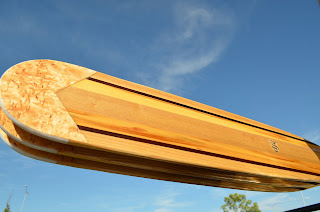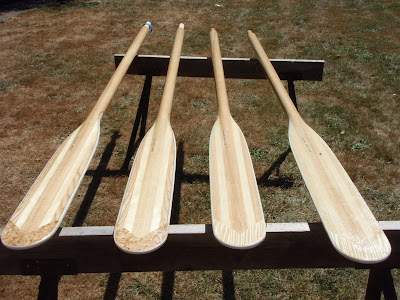The majority of the blade is Alaska Yellow Cedar. It's damp, shock resistant, has a really tight grain and has a high strength to weight ratio. The AKC in this paddle was unique in that it had a very blonde tone with dark grain stripes. Correct me if I'm wrong but I believe that the darker grain stripes are caused by different minerals in the soil.
One detail that I've been working on lately is shaft diameter. I haven't had many shafts break so I've been slimming down the diameter with a lot of success. The greatest advantage of a wooden paddle is the flex of the solid core wood shaft, something that you don't get with a hollow core (think sailboat masts here, they are made with a hollow core to be stiffened up).
The shaft of this paddle is made from ash and yellow cedar. The blade has yellow cedar, walnut fairing strips, ash bangstrips and a curly maple tip. Paddle blade terminology credit goes to the master Jim Snyder.



















